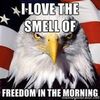First attempt at Milky Way Photos
Sep 18, 2017 14:32:00 #
I took the first two of these last Saturday night with a Nikon D800E with a 16-35mm F4. I did not have my tripod nor my remote shutter release, so the camera was propped up on the roof of my car with my laptop bag and a pillow. I used a 2-second delay. I just pointed the camera at the sky and pressed the shutter. They are both 30 seconds, F4, and ISO 2000. I was so encouraged by these I went home Sunday and returned that night with my Pentax K-3 with the GPS attached and my Pentax 16-50mm F2.8. I brought the tripod and the remote shutter release. I tried again and my cousin and I fooled around with light painting. It was a total learning experience.
The location was about 20 miles west of Junction, Texas on my family ranch.
The last six are with the Pentax at 1600 ISO.
The GPS astrotracker on the K-3 gave me shocking amounts of time with the shutter open with little discernible star trails. I was impressed.
I'm going to try this some more. I need to find some good foregrounds to make it all work.
The location was about 20 miles west of Junction, Texas on my family ranch.
The last six are with the Pentax at 1600 ISO.
The GPS astrotracker on the K-3 gave me shocking amounts of time with the shutter open with little discernible star trails. I was impressed.
I'm going to try this some more. I need to find some good foregrounds to make it all work.
Nikon at 30 seconds
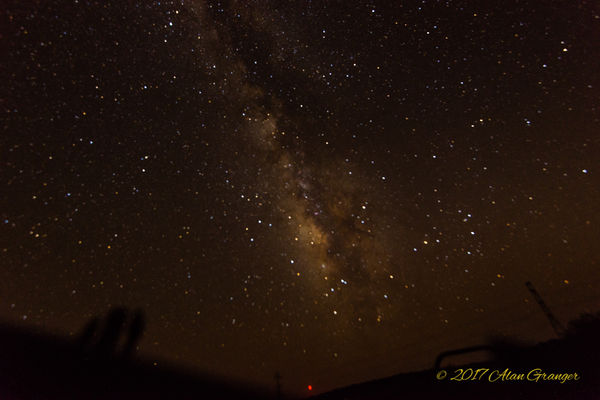
(Download)
Nikon at 30 seconds
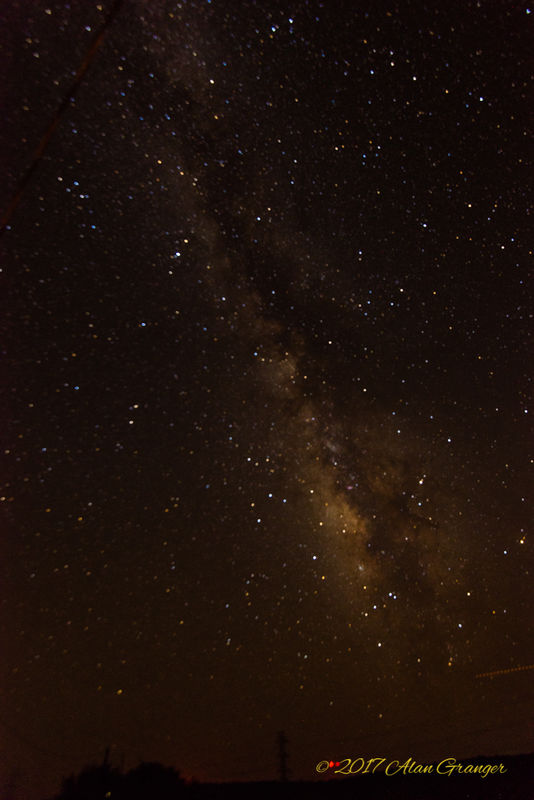
(Download)
127 seconds. Some star movement seen.
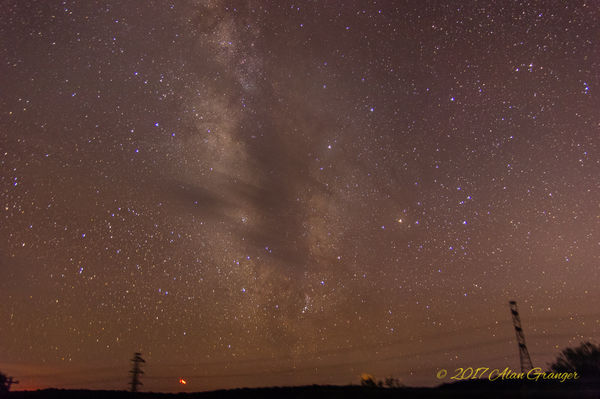
(Download)
57 seconds
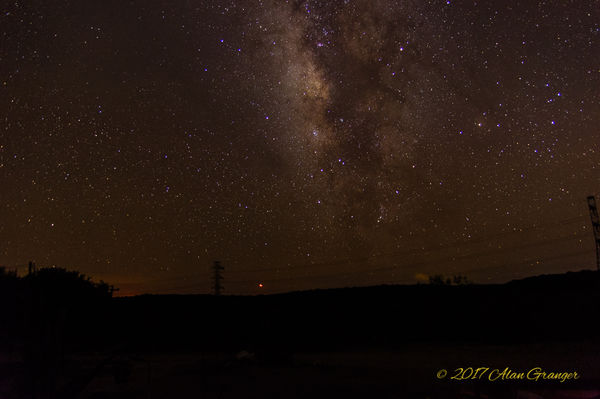
(Download)
44 seconds. Trying light painting
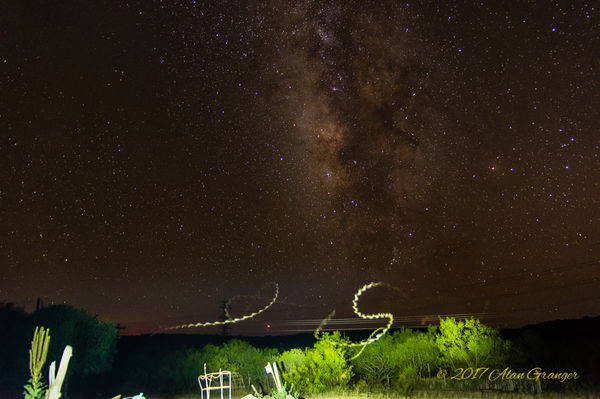
(Download)
44 seconds
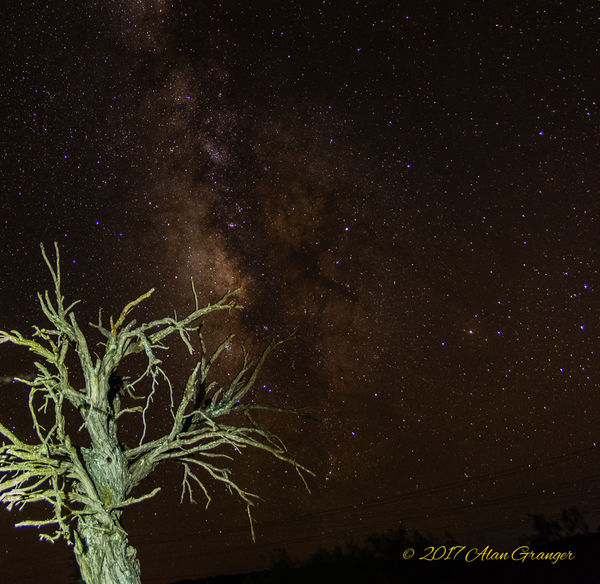
(Download)
45 seconds
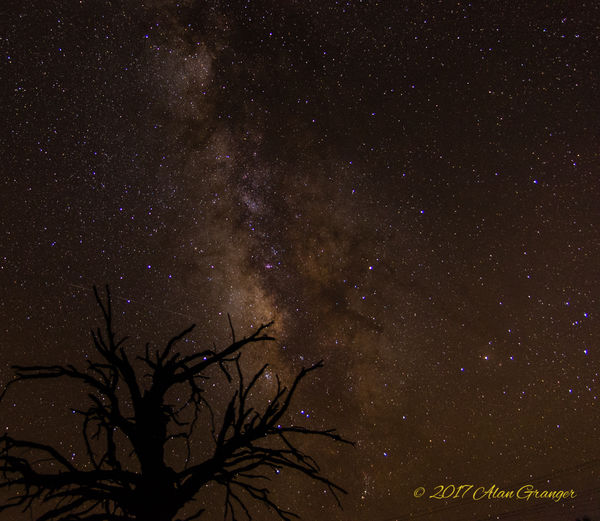
(Download)
38 seconds
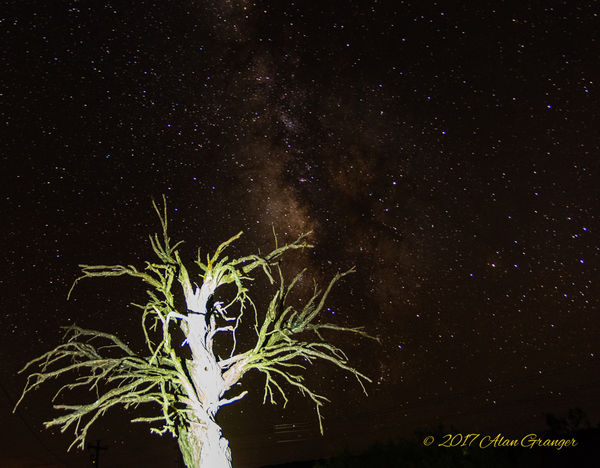
(Download)
Sep 18, 2017 14:42:41 #
Sep 18, 2017 14:55:42 #
Sep 18, 2017 15:00:26 #
Sep 18, 2017 15:00:49 #
Sep 18, 2017 15:00:57 #
lightcatcher wrote:
Very good first attempt...keep it going by doing more.
Thank you, I intend to.
Sep 18, 2017 15:02:06 #
Tet68survivor wrote:
Even without all the high tech stuff, you did a great job!
I was very pleasantly surprised. Thank you.
Sep 18, 2017 15:09:04 #
Sep 18, 2017 15:19:19 #
Sep 18, 2017 16:03:24 #
I like the 2nd to the last image with the silhouette of the tree. But why you switched to the APS-C camera body is what I'd like to know. The Nikon should net much better results with the FF sensor that is one of the best in the world. I don't know if you've looked up the proper settings for shooting this or not but I just attended a seminar on night photography and they, Ken Sklute, suggest starting with this:
FF body
16mm or close to that at f/2.8 at ISO 3200 for 30 seconds. Any longer than a 30 sec exposure and the stars will not be round because of the earths rotation. So if you are using a f/4 lens which is one stop slower than f/2.8, you'd use a one stop more ISO or 6400. It's much better to use at least a f/2.8 lens though. The rule of thumb to get pinpoint stars, use the “500 rule,” which calls for you to divide 500 by the focal length of the lens you’re using. If you’re working with a crop sensor camera be sure to account for the crop factor (typically 1.5). Use tungsten W/B or somewhere around 4800 color temp. Don't use auto w/b. And take a picture using the same camera settings with the lens cap on so that you can see the sensor noise on a long exposure on a black image. Don't forget to turn off all your camera lights including the LCD, picture review, etc.a and put tape on any other lights your camera might exhibit. Also, cover your eyepiece.
Of course, you can use a crop sensor body, but you'll have to do the math on the focal length etc. You may have more noise to deal with though.
FF body
16mm or close to that at f/2.8 at ISO 3200 for 30 seconds. Any longer than a 30 sec exposure and the stars will not be round because of the earths rotation. So if you are using a f/4 lens which is one stop slower than f/2.8, you'd use a one stop more ISO or 6400. It's much better to use at least a f/2.8 lens though. The rule of thumb to get pinpoint stars, use the “500 rule,” which calls for you to divide 500 by the focal length of the lens you’re using. If you’re working with a crop sensor camera be sure to account for the crop factor (typically 1.5). Use tungsten W/B or somewhere around 4800 color temp. Don't use auto w/b. And take a picture using the same camera settings with the lens cap on so that you can see the sensor noise on a long exposure on a black image. Don't forget to turn off all your camera lights including the LCD, picture review, etc.a and put tape on any other lights your camera might exhibit. Also, cover your eyepiece.
Of course, you can use a crop sensor body, but you'll have to do the math on the focal length etc. You may have more noise to deal with though.
alandg46 wrote:
I took the first two of these last Saturday night ... (show quote)
Sep 18, 2017 17:12:26 #
jeep_daddy wrote:
I like the 2nd to the last image with the silhouet... (show quote)
The Pentax with the GPS unit and the Astrotracer enable allows a much extended shutter duration, by moving the sensor. With the Astrotracer enabled when you go to bulb, the camera shuts off all lights and goes to mirror up. The Nikon even with a F 2.8 lens cannot do this. Further the noise on a K-3 is not bad at all. I know I have one of each plus a D500. In fact I should have tried this on my Pentax K-5. It is marginally better than the K-3. In any case the noise on the Pentaxes under normal use is more pleasing to me than the Nikons.
Doing the math with the Astrotracer enable is just a starting point. You must experiment to find how far you can go. Note that one of the photos with the Pentax the shutter was open for 147 seconds. That appeared to me just past the limit. There is no way that the Nikon could have gotten there even with a 2.8 lens.
Sep 19, 2017 07:00:59 #
alandg46 wrote:
I took the first two of these last Saturday night ... (show quote)
Those are wonderful images of the sky you created! Junction is a good area for night sky photography. I grew up there and had some great times.


Sep 19, 2017 07:14:42 #
canondave1 wrote:
Those are wonderful images of the sky you created! Junction is a good area for night sky photography. I grew up there and had some great times. 



Thank you. Junction is a great place for night sky photography/
Sep 19, 2017 09:03:35 #
alandg46 wrote:
I took the first two of these last Saturday night ... (show quote)
I am going to have to try taking night pictures. Very nice. Don't much care for the light painting.
Sep 19, 2017 09:10:59 #
Mary Kate wrote:
I am going to have to try taking night pictures. Very nice. Don't much care for the light painting.
Thank you. The light painting part was experimental. My cousin and I had no idea what we were doing. We did get some ideas for a future attempt and some "don't try this again" stuff.
If you want to reply, then register here. Registration is free and your account is created instantly, so you can post right away.


